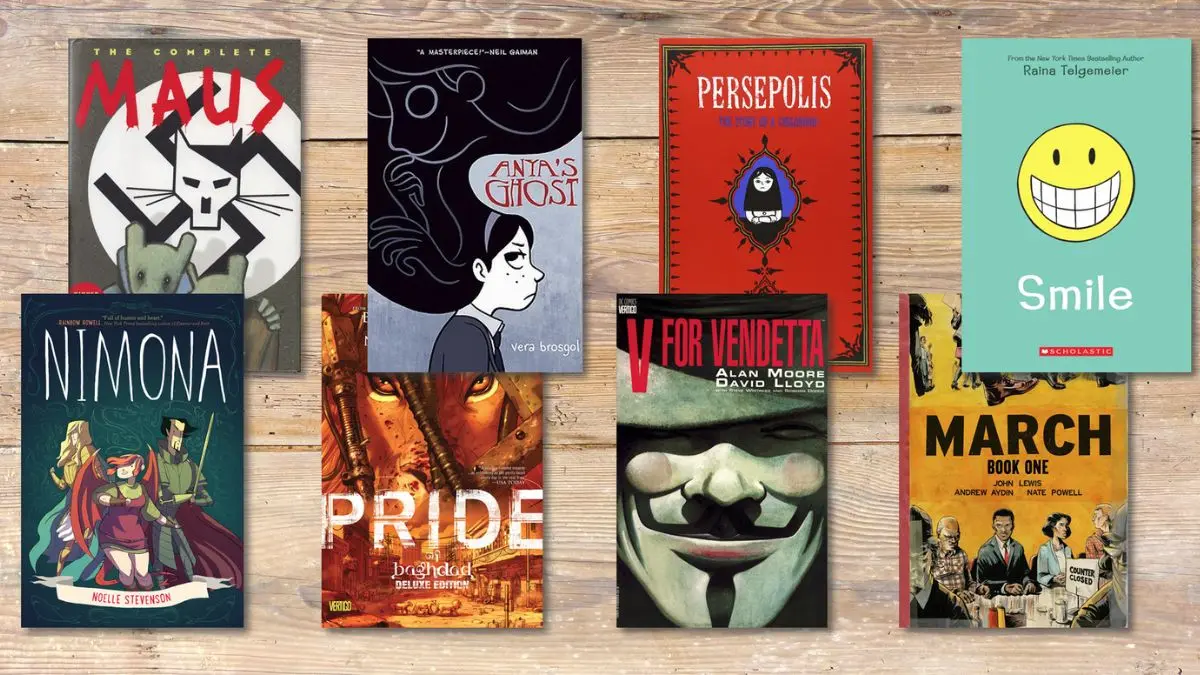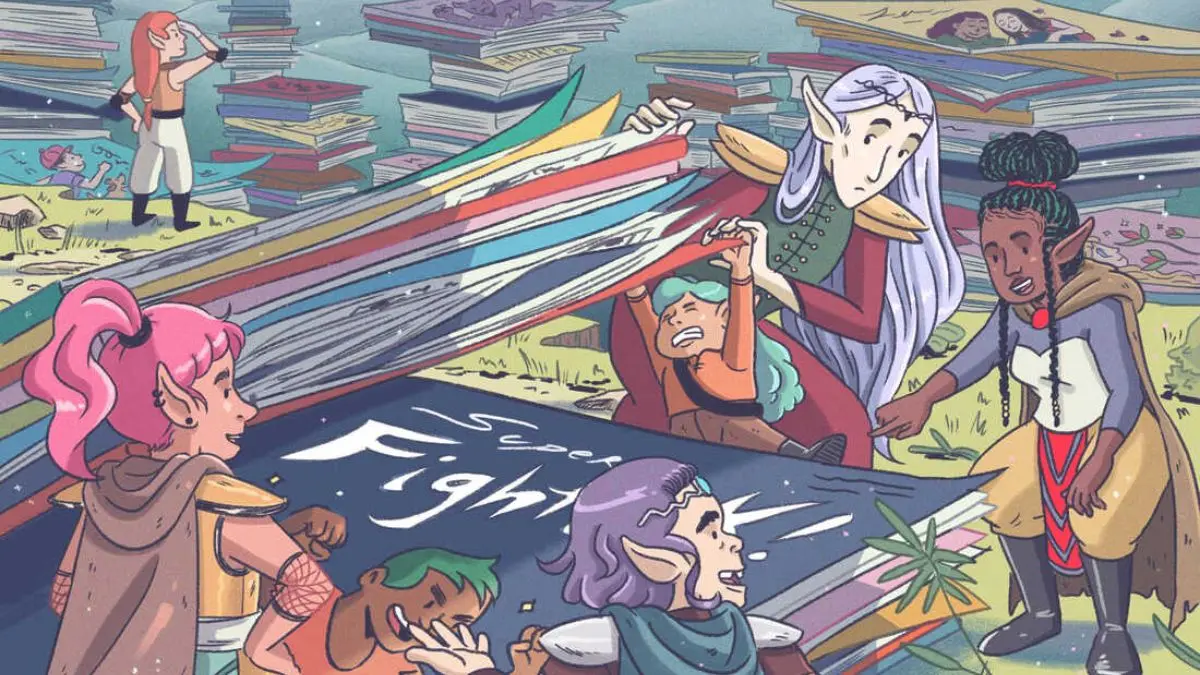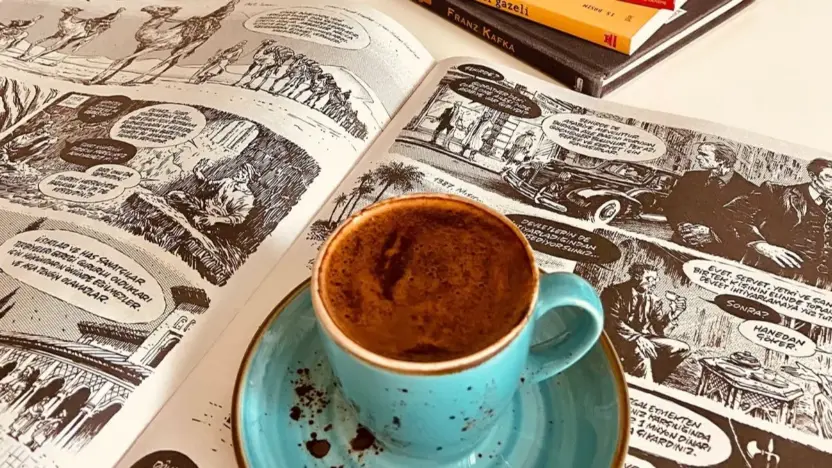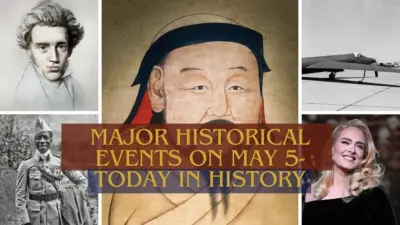Graphic novels, a genre that combines textual narrative with sequential art, have steadily risen in popularity and legitimacy as a form of literature. Unlike traditional novels that rely solely on text to convey stories and ideas, graphic novels incorporate a rich visual element that enhances storytelling. This fusion of text and imagery not only captivates readers but also offers a unique medium for boosting reading comprehension—a critical skill in literacy education.
Initially dismissed by some educators and critics as mere entertainment, graphic novels have proven their worth as educational tools. They engage a wide range of readers, from young children grappling with basic literacy skills to adults enjoying sophisticated narratives. The purpose of this article is to explore how graphic novels can significantly contribute to enhancing reading comprehension. Through their distinctive format, graphic novels engage multiple senses, help decode complex information, and offer an accessible approach to reading that traditional texts may not provide.
Understanding Reading Comprehension
Reading comprehension refers to the ability to process text, understand its meaning, and integrate it with what the reader already knows. It’s a foundational skill in literacy that enables learners to interpret information, make inferences, and deduce conclusions from written material. Effective reading comprehension is not just about decoding words but also involves critical thinking and analytical skills to grasp deeper meanings and connections.
Traditionally, reading comprehension has been taught using various texts including novels, essays, and poetry, which provide rich opportunities for developing language skills and understanding complex ideas. However, these traditional texts might not engage all types of learners effectively. Some students struggle with large blocks of text due to a variety of learning preferences or difficulties, which can hinder their comprehension and overall motivation to read.
The challenges in teaching reading comprehension include maintaining engagement, adapting to diverse learning styles, and addressing the varying language proficiency levels within a classroom. Teachers are constantly seeking innovative methods and materials that can cater to these diverse needs while promoting active learning and comprehension. This is where graphic novels enter the scene, offering a visual and textual narrative that can make reading a more engaging and comprehensible experience for students.
How Graphic Novels Support Reading Comprehension
| Aspect of Reading Comprehension | Contribution of Graphic Novels | Explanation |
|---|---|---|
| Visual Literacy | Enhances visual literacy skills | Graphic novels require readers to interpret visual information alongside text, improving their ability to understand and analyze visual data in various contexts. |
| Engagement | Increases reader engagement | The visual elements of graphic novels captivate readers, making the reading experience more immersive and enjoyable, especially for reluctant readers. |
| Cognitive Load | Reduces cognitive load | By integrating images with text, graphic novels help convey complex information in a digestible format, easing the mental effort needed to comprehend. |
| Language Development | Aids in vocabulary and language learning | The combination of visual context and text in graphic novels helps readers understand new vocabulary and complex language structures more easily. |
| Critical Thinking | Fosters critical thinking and interpretation | Readers must analyze the interplay between text and imagery, which enhances their ability to think critically and interpret nuanced messages. |
| Inclusivity | Supports diverse learning styles | The multimodal nature of graphic novels makes them accessible to various types of learners, including those with learning disabilities, ensuring a broader inclusivity. |
| Motivation | Boosts motivation to read | Graphic novels often feature compelling storytelling and artwork that can motivate readers to explore further reading and develop a habit of reading. |

Visual Literacy
Graphic novels inherently enhance visual literacy by requiring readers to interpret and understand information presented visually. This includes decoding meaning from images, understanding the sequencing of panels, and analyzing the visual context that accompanies the text. As visual literacy becomes increasingly important in a digital age where images and graphics dominate communication, readers who engage with graphic novels develop skills that are applicable both inside and outside the classroom.
Graphic novels often utilize a complex array of visual techniques such as shading, perspective, and symbolic colors to convey mood and emphasize narrative elements. This encourages readers to pay close attention to visual details, fostering a deeper level of engagement and comprehension. By interpreting these visual cues, readers enhance their ability to make inferences and draw conclusions, crucial skills in reading comprehension and critical thinking.
Engagement
Graphic novels increase reader engagement by presenting stories through a compelling mix of artwork and text. The colorful illustrations and varied art styles attract readers who might be less interested in traditional, text-heavy books. This visual appeal can be particularly effective in capturing the attention of reluctant readers or young learners, drawing them into the story and motivating them to continue reading.
In addition to their aesthetic appeal, graphic novels often tackle a wide range of themes and genres, appealing to diverse interests. This versatility ensures that readers can find graphic novels that resonate with their personal experiences or fantasies, further enhancing engagement. The combination of visual stimuli and narrative depth ensures that readers remain interested and invested in the unfolding story, thereby improving their overall reading experience and comprehension.
Cognitive Load
Graphic novels can significantly reduce cognitive load by pairing complex narrative elements with corresponding images. This dual coding (text and images) helps readers process information more efficiently and retain it longer. For instance, when a graphic novel depicts a historical event, the images accompanying the text provide a visual representation that makes it easier for readers to understand and remember the context and details of the event.
This reduction in cognitive load is particularly beneficial for younger readers or those struggling with dense texts. By simplifying and illustrating complicated concepts, graphic novels make learning more accessible and less intimidating, allowing readers to explore sophisticated ideas at a manageable pace. This supports not only comprehension but also boosts confidence in reading abilities.

Language Development
Graphic novels aid in vocabulary and language development by contextualizing new words and phrases within vivid illustrations. This visual context helps readers infer the meanings of unfamiliar terms without needing to consult a dictionary, allowing for more fluid reading and learning. Moreover, the dialogue and internal monologues featured in graphic novels expose readers to conversational language and varied linguistic structures, enhancing their language skills.
Additionally, the multimodal narrative style of graphic novels—combining text, dialogue, and visual elements—offers a rich linguistic experience that mirrors real-world communication. This exposure helps readers develop a nuanced understanding of language, including idiomatic expressions, cultural references, and complex sentence structures, thereby broadening their linguistic competence and comprehension.
Critical Thinking and Interpretation
Graphic novels foster critical thinking by requiring readers to interpret the interplay between text and images. This involves analyzing how visual elements like panel layout, color schemes, and character expressions support or enhance the textual narrative. Such analysis not only deepens comprehension but also cultivates interpretative skills, as readers learn to appreciate subtler aspects of storytelling such as tone, theme, and symbolism.
The often ambiguous or metaphorical nature of visual storytelling in graphic novels encourages readers to engage in deeper reflection and discussion. By deciphering the layers of meaning within both text and imagery, readers enhance their ability to undertake critical analysis, draw inferences, and make educated guesses about narrative developments, all of which are key components of advanced reading comprehension.
Inclusivity
Graphic novels support diverse learning styles and needs, making reading accessible to a wider range of readers, including those with learning disabilities such as dyslexia. The visual format can help bypass certain reading challenges by providing contextual clues and reducing the reliance on text-heavy explanations. This inclusivity fosters a positive reading experience and can help build confidence among readers who might otherwise feel marginalized by conventional reading materials.
Graphic novels often feature culturally diverse characters and settings, promoting inclusivity on a broader scale. By presenting stories that reflect a variety of backgrounds, experiences, and perspectives, graphic novels can resonate with readers from different cultural and social contexts, enhancing their engagement and empathy. This representation not only enriches the reading experience but also supports the development of social and emotional skills that are integral to comprehensive reading comprehension.

Motivation
Graphic novels boost motivation to read by offering an immersive and interactive experience that is often perceived as more entertaining and less daunting than traditional books. This can be particularly motivating for young readers or those who are new to reading independently. The excitement of exploring a visually dynamic story encourages continued reading and fosters a positive attitude towards reading activities.
The episodic and often serialized nature of graphic novels also encourages sustained reading habits. Many graphic novels are part of larger series that can captivate readers over time, prompting them to seek out subsequent volumes. This continuous engagement not only strengthens reading skills but also builds anticipation and enthusiasm for reading, which are key components in developing a lifelong love for reading and learning.
Also Read: Why Does Reading Make us Sleepy?



